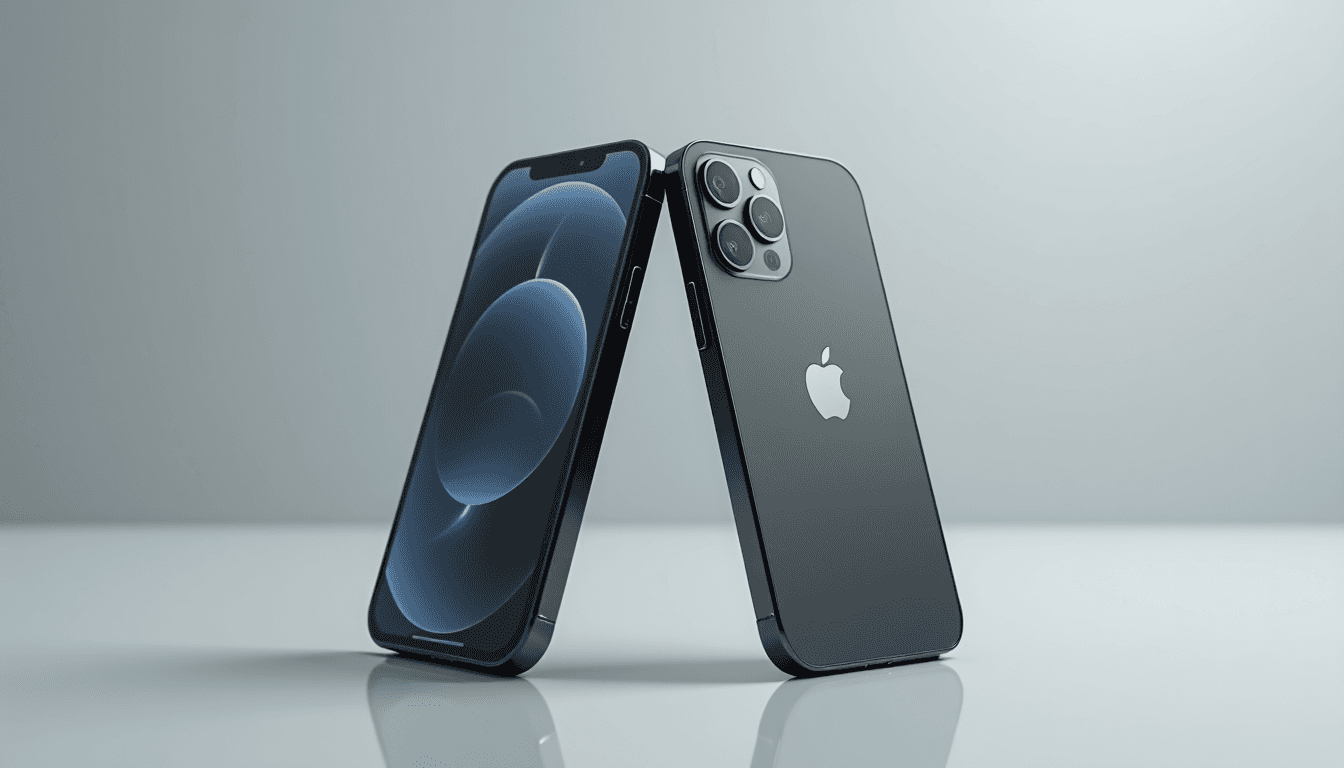iPhone 17 Design Leak: Fresh Details That Will Surprise You
Apple's iPhone 17 will feature significant design changes when released next year, analysis suggests. Details from multiple reports indicate the iPhone 17 Pro Max will deliver 33 hours of video playback, up from 29 hours on the current iPhone 15 Pro Max.
The iPhone 17 Pro models will likely abandon titanium in favour of a new half-glass, half-aluminum exterior design. Industry sources say this change aims to improve durability while maintaining wireless charging capabilities through the glass portion.
Most notably, the iPhone 17 Pro will incorporate a horizontal camera bar stretching across the width of the device, similar to designs seen on Google's Pixel 9 Pro. This represents a dramatic departure from Apple's current camera layout.
Reports suggest the lineup will include a new iPhone 17 Air model featuring a 6.6-inch display and an exceptionally thin 6mm profile, potentially making it the thinnest iPhone ever produced. The standard iPhone 17 is expected to maintain its 6.1-inch display size.
For the first time, all iPhone 17 models will include ProMotion display technology with 120Hz refresh rates, a feature previously limited to Pro models. This upgrade delivers smoother scrolling and more responsive touch interactions across the entire range.
How iPhone design has evolved over the years
Apple's smartphone has transformed repeatedly since its 2007 launch, reflecting both technological progress and changing design approaches that influence the rumoured iPhone 17.
From rounded edges to flat frames
The iPhone's shape has alternated between curved and angular profiles throughout its history. The original model featured a curved aluminum back with rounded edges. This approach changed dramatically with the iPhone 4 in 2010, which introduced a flat-edge design with glass panels front and back, held together by a stainless steel frame. Apple marketed it as the "world's thinnest smartphone" at the time.
Several generations of rounded designs followed, peaking with the iPhone 6 and its 6.1mm profile. Users were surprised when Apple returned to flat edges with the iPhone 12 series in 2020. This design choice wasn't merely aesthetic—the squared-off edges provided better grip while accommodating more advanced components.
This evolution mirrors broader technological needs. Rounded edges initially offered comfortable handling for smaller screens. As displays grew from the original 3.5 inches to today's 6.7-inch Pro Max models, flat edges became practical again, providing better structural integrity for larger devices.
The shift from glass to titanium and now aluminum
Material choices have defined each iPhone generation's character. The original iPhone used aluminum casing with plastic accents, changing to glass and stainless steel with the iPhone 4. The iPhone 5 introduced an aluminum unibody design in 2012, establishing a trend that continued for several years.
A significant upgrade came with the iPhone 15 Pro in 2023, when Apple replaced stainless steel with titanium frames. This lighter yet stronger material helped balance the increasing weight of larger batteries and camera systems.
In a surprising reversal, multiple reports indicate the iPhone 17 Pro models may abandon titanium for aluminum frames. These models might feature a distinctive "part-aluminum, part-glass design" with the upper section housing a larger rectangular camera bump made from aluminum instead of glass. The lower portion would likely retain its glass composition to facilitate wireless charging without metal interference.
Camera bump evolution: square to horizontal bar
The camera bump—once considered a design compromise—has become a distinctive iPhone feature. Before the iPhone 6, cameras sat flush with the body. As Apple prioritized thinner profiles while enhancing photography capabilities, the bump became necessary.
The first noticeable camera protrusion appeared on the iPhone 6, extending 1mm from its aluminum body. Many users initially disliked this compromise, particularly as it caused the phone to wobble when placed on flat surfaces.
With the iPhone 7, Apple better integrated the bump with the body, though it grew to 7.6mm in diameter. The iPhone X introduced the most significant change—the largest bump at that time, measuring 24.19mm long by 11.7mm wide. It also marked the first vertical camera alignment, contrasting with the previous horizontal arrangement.
Recent generations have embraced the camera bump as a design element rather than a compromise. The trend toward horizontal bars spanning a significant portion of the phone's width appears set to continue with iPhone 17 Pro models, which reportedly will feature larger rectangular camera modules. This evolution reflects both aesthetic priorities and practical needs for housing increasingly sophisticated multi-lens systems and sensors.
New iPhone 17 design features significant changes
The iPhone 17 lineup will feature some of the most substantial design changes in recent years, leaked information suggests. These modifications range from an ultra-thin new model to redesigned camera systems and display upgrades across all devices.
Ultra-thin Air model with 6.6-inch display
Industry analysts say the iPhone 17 Air will be the thinnest iPhone ever produced, measuring just 6mm thick. This represents a 30% reduction compared to current models while maintaining a 6.6-inch display size.
"This model sits between the standard and Plus-sized devices, creating a new category in Apple's lineup," said a supply chain source familiar with Apple's plans. The Air model's slender profile reportedly houses advanced battery technology that maintains comparable battery life to thicker models despite space constraints.
Horizontal camera bar redesign
The iPhone 17 Pro models will adopt a horizontal camera bar spanning most of the device's width, a significant departure from the square camera island on current models. This design bears similarities to camera layouts already implemented on Google's Pixel devices.
Technical analysis indicates this wider arrangement provides better component spacing, potentially improving heat dissipation and accommodating larger camera sensors. The redesign also creates a more balanced weight distribution, reducing the wobble effect when placed on flat surfaces.
Four distinct models with varied dimensions
Apple will maintain the standard 6.1-inch display size for the base iPhone 17, industry reports suggest. The lineup will include four models: the standard 17, the ultra-thin Air with its 6.6-inch display, and the Pro and Pro Max variants.
The 6.6-inch display on the Air model positions it between the 6.1-inch standard iPhone and the 6.7-inch Pro Max, creating clearer differentiation between models beyond performance capabilities.
ProMotion technology for all devices
For the first time, 120Hz refresh rate displays will appear across the entire iPhone range. Previously limited to Pro models, this technology provides smoother scrolling and more responsive touch interactions.
The iPhone 17 lineup will also support Wi-Fi 7 connectivity, offering faster speeds and improved reliability compared to the current Wi-Fi 6E standard. Apple's decision to include these features in all models represents a departure from previous strategies that reserved advanced technologies for premium devices.
Colour and material integration
Apple is implementing more cohesive design elements across the iPhone 17 range, with camera housings adopting the same colour and finish as device frames. This represents a change from previous generations where camera modules often contrasted with the phone's body colour.
The materials used for camera housings will match the frame, with aluminum-framed models featuring aluminum camera components. This approach creates a more unified appearance while addressing practical concerns around durability and wireless charging capabilities.
iPhone 17 design leak suggests major changes
!Hero Image for iPhone 17 Design Leak: Fresh Details That Will Surprise You
Apple's iPhone 17 will feature significant design changes when released next year, analysis suggests. Details from multiple reports indicate the iPhone 17 Pro Max will deliver 33 hours of video playback, up from 29 hours on the current iPhone 15 Pro Max.
The iPhone 17 Pro models will likely abandon titanium in favour of a new half-glass, half-aluminum exterior design. Industry sources say this change aims to improve durability while maintaining wireless charging capabilities through the glass portion.
Most notably, the iPhone 17 Pro will incorporate a horizontal camera bar stretching across the width of the device, similar to designs seen on Google's Pixel 9 Pro. This represents a dramatic departure from Apple's current camera layout.
Reports suggest the lineup will include a new iPhone 17 Air model featuring a 6.6-inch display and an exceptionally thin 6mm profile, potentially making it the thinnest iPhone ever produced. The standard iPhone 17 is expected to maintain its 6.1-inch display size.
For the first time, all iPhone 17 models will include ProMotion display technology with 120Hz refresh rates, a feature previously limited to Pro models. This upgrade delivers smoother scrolling and more responsive touch interactions across the entire range.
Material changes for iPhone 17 Pro models
Apple plans to shift from titanium to aluminum for its Pro models just one year after introducing the premium material, supply chain analyst Jeff Pu said. The change primarily stems from environmental considerations.
The move aligns with Apple's goal to achieve carbon neutrality across all products and supply chain by 2030. Aluminum generally has a lower carbon footprint compared to titanium processing.
This material shift brings Apple's premium iPhone lineup full circle. The company has used aluminum, stainless steel, and most recently titanium before potentially returning to aluminum frames. The iPhone 17 Pro would be the first high-end model to use aluminum since before the iPhone X era.
Industry sources suggest the iPhone 17 Pro models might be marketed as Apple's first carbon-neutral iPhones, following the approach taken with recent Apple Watch and Mac mini models. Beyond environmental benefits, aluminum offers improved heat dissipation and potentially reduced weight.
The most visible change will be a new "part-aluminum, part-glass" rear design. Multiple reports indicate the upper portion of the iPhone 17 Pro's back will feature a larger rectangular camera section made from aluminum rather than glass, while the bottom half retains its glass composition.
This hybrid approach represents the most significant shift in iPhone Pro rear design in several years. The aluminum section creates a unified look with the camera system, while the glass portion maintains essential functionality.
The strategic placement of materials serves dual purposes. It preserves wireless charging capability through the glass bottom section, as "glass doesn't interfere with MagSafe wireless charging, unlike metals like aluminum or titanium". Additionally, the aluminum upper section should be less prone to breakage than an all-glass back.
Reports suggest iPhone 17 Pro models might also introduce reverse wireless charging - a feature long available on competitor devices. This would allow users to charge accessories like AirPods directly from their iPhone, with power delivery up to 7.5W.
New iPhone 17 design likely to improve practical performance
The redesigned iPhone 17 lineup aims to address several longstanding performance issues, including thermal management problems that have affected previous models, analysis suggests.
According to industry reports, the iPhone 17 Pro models will incorporate vapor chamber cooling technology, a system already used in many premium Android devices. This engineering approach spreads heat across a larger surface area, potentially preventing performance slowdowns during intensive tasks.
"Combined with the A19 Pro chip's improved thermal design, these devices should maintain consistent performance even during demanding applications," a technology analyst told tech publication PhoneTech last month.
Battery performance also appears set for improvement. The iPhone 17 Pro models will likely feature slightly thicker bodies to accommodate larger batteries, offering up to 40 hours of screen time compared to the current 33 hours of video playback on the iPhone 15 Pro Max.
Despite its ultra-slim 6mm profile, the iPhone 17 Air reportedly uses redesigned display components and improved silicon to maintain battery performance comparable to current models.
The full-width camera bar design serves practical purposes beyond aesthetics. This horizontal arrangement eliminates the wobble effect that occurs when using phones with protruding square camera bumps on flat surfaces.
The material shift from titanium to aluminum in Pro models should reduce overall weight, as titanium is significantly denser. However, this raises questions about structural integrity, particularly for the exceptionally thin iPhone 17 Air.
An early prototype reviewer noted: "If they find a way to make this strong, they are going to sell a boatload of these things."
Compatibility with accessories and existing products
The significant design changes to iPhone 17 models will require users to purchase new protective cases and other accessories, industry analysts say.
Existing cases will not fit the new iPhone 17 lineup due to substantial changes in dimensions and camera layouts. The horizontal camera bar on Pro models presents the most obvious compatibility challenge, while the ultra-thin 6mm iPhone 17 Air introduces an entirely new form factor requiring specialized protection.
Accessory manufacturers are already developing cases tailored to these new dimensions, according to supply chain reports. Several major brands have begun production based on leaked specifications, though final adjustments will likely follow Apple's official announcement.
MagSafe technology will remain present across all iPhone 17 models, including the new iPhone 17 Air. This ensures compatibility with Apple's ecosystem of magnetic accessories including chargers, wallets and battery packs.
For iPhone 17 Pro models with their half-aluminum, half-glass back design, the glass section positioned at the bottom maintains wireless charging functionality. The glass portion allows wireless power transfer without interference from aluminum sections. All models will retain the standard MagSafe magnet configuration.
The horizontal camera configuration on Pro models has prompted accessory makers to create new decorative camera covers with precisely aligned cutouts. These accessories allow users to customize the appearance of the wide camera bar.
Camera protection for the iPhone 17 Air with its single 48MP camera will be simpler but equally important. Protective accessories must accommodate the new sensor arrangement while ensuring clarity and functionality remain uncompromised.
"The redesigned camera systems mean users will need to replace their existing lens protectors," a spokesperson for a major accessory manufacturer told technology analysts last month.
iPhone 17 leak suggests major design changes
Apple's iPhone 17 will feature significant design changes when released next year, analysis suggests. Details from multiple reports indicate the iPhone 17 Pro Max will deliver 33 hours of video playback, up from 29 hours on the current iPhone 15 Pro Max.
The iPhone 17 Pro models will likely abandon titanium in favour of a new half-glass, half-aluminum exterior design. Industry sources say this change aims to improve durability while maintaining wireless charging capabilities through the glass portion.
Most notably, the iPhone 17 Pro will incorporate a horizontal camera bar stretching across the width of the device, similar to designs seen on Google's Pixel 9 Pro. This represents a dramatic departure from Apple's current camera layout.
Reports suggest the lineup will include a new iPhone 17 Air model featuring a 6.6-inch display and an exceptionally thin 6mm profile, potentially making it the thinnest iPhone ever produced. The standard iPhone 17 is expected to maintain its 6.1-inch display size.
For the first time, all iPhone 17 models will include ProMotion display technology with 120Hz refresh rates, a feature previously limited to Pro models. This upgrade delivers smoother scrolling and more responsive touch interactions across the entire range.
iPhone 17 design changes address practical concerns
The iPhone 17 Air at just 6mm thick stands as the most significant addition to Apple's lineup, potentially becoming the thinnest iPhone ever released. This ultra-slim device responds to consumer demand for more portable devices without sacrificing screen size.
The shift from titanium to aluminum for Pro models aligns with Apple's environmental goals while potentially reducing overall weight. Industry analysts suggest this change could help Apple market these devices as their first carbon-neutral iPhones.
Battery improvements appear substantial across the lineup, with the iPhone 17 Pro Max expected to offer 33 hours of video playback compared to current models. These enhancements come alongside vapor chamber cooling technology already common in premium Android devices.
The horizontal camera bar spanning the width of Pro models addresses a practical concern - eliminating the wobble when phones are placed on flat surfaces. This redesign also allows for better spacing between camera components, potentially improving heat dissipation.
For users, the benefits of these design changes may outweigh the need to purchase new accessories. The half-glass, half-aluminum back represents a balance between durability and functionality, with the glass portion strategically positioned to maintain wireless charging capabilities.
While official confirmation of these details remains forthcoming, the evidence suggests these changes represent more than incremental updates. The addition of ProMotion technology across all models ensures every iPhone 17 user will experience the same responsive display performance previously reserved for premium devices.
FAQs
Q1. What major design changes are expected for the iPhone 17?
The iPhone 17 lineup is expected to feature significant design changes, including a full-width camera bar on Pro models, a new ultra-thin iPhone 17 Air with a 6.6-inch display, and a shift from titanium to aluminum frames for Pro models. All models are also expected to receive ProMotion display technology with 120Hz refresh rates.
Q2. How will the new design affect battery life and performance?
The iPhone 17 Pro models are expected to have improved battery life, with the Pro Max offering up to 33 hours of video playback. The devices will also feature vapor chamber cooling technology, which should enhance thermal performance and maintain high performance under heavy load without throttling.
Q3. Will the iPhone 17 be compatible with existing accessories?
Most existing cases and accessories will likely not be compatible with the iPhone 17 models due to significant changes in dimensions, materials, and camera layouts. However, MagSafe technology will be present across the entire iPhone 17 family, ensuring compatibility with Apple's magnetic accessories.
Q4. What changes are coming to the camera system on the iPhone 17?
The iPhone 17 Pro models are expected to feature a dramatic camera redesign with a horizontal camera bar spanning nearly the entire width of the phone's back. This new arrangement could allow for improved spacing between camera components and potentially lead to notable photography improvements.
Q5. How does the new design impact the phone's durability and wireless charging?
The iPhone 17 Pro models are rumored to have a unique half-glass, half-aluminum back design. The glass portion at the bottom will maintain wireless charging functionality, while the aluminum upper section may offer improved durability. This design aims to balance wireless charging capabilities with enhanced protection for vulnerable parts of the device.









